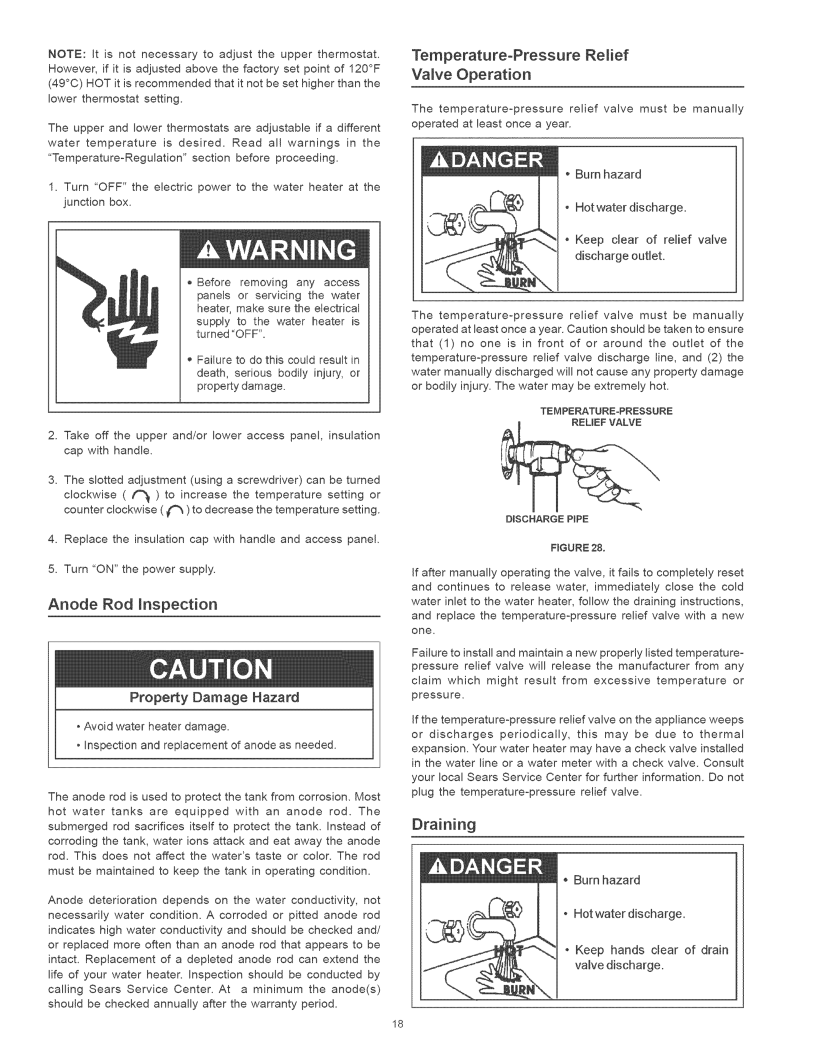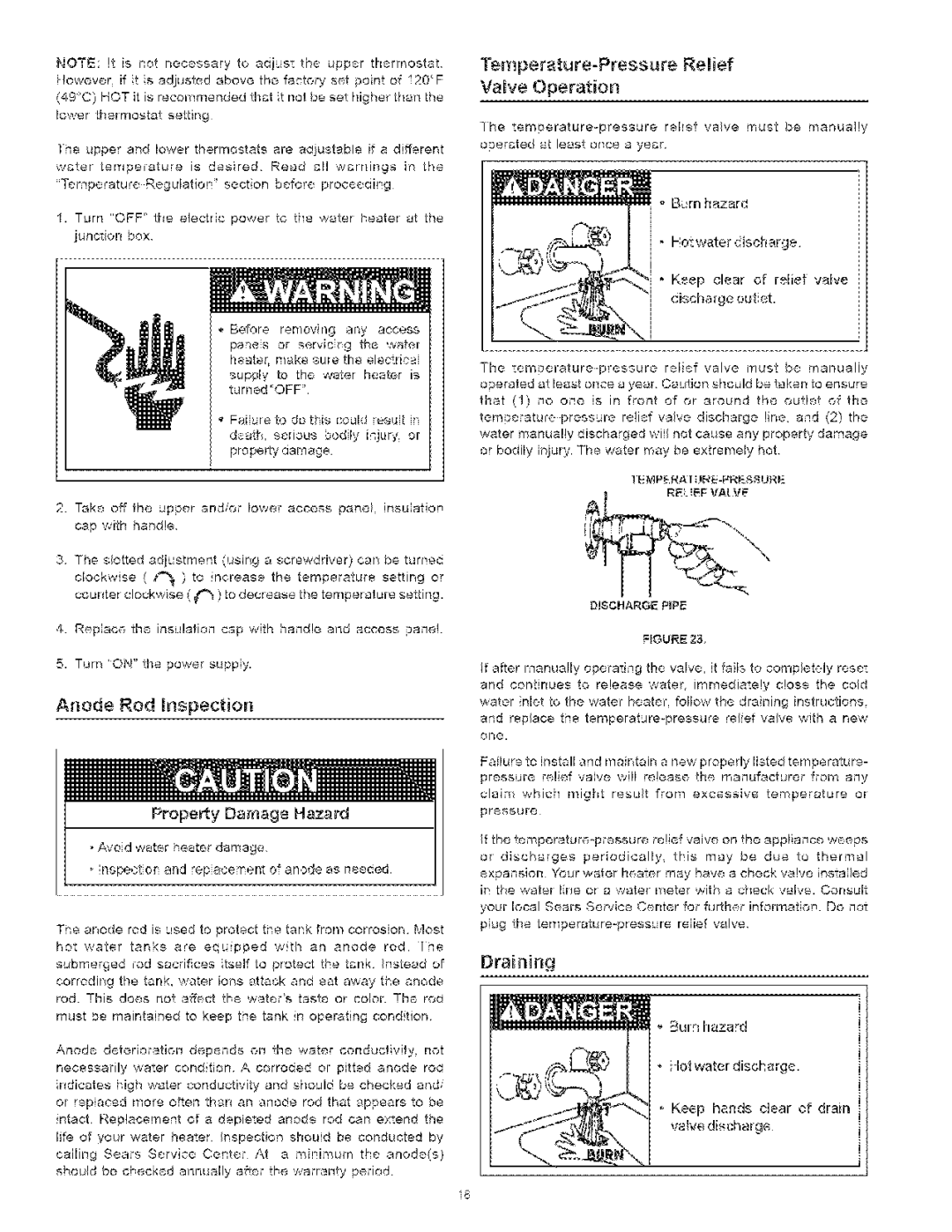
NOTE:It is notnecessaryto adjusttheupperthermostat. However,ifit isadjustedabovethefactorysetpointof 120°F (49°C)HOTitisrecommendedthatitnotbesethigherthanthe lowerthermostatsetting.
Theupperandlowerthermostatsareadjustableifa different watertemperatureis desired.Readal!warningsin the
1.Turn"OFF"theelectricpowertothewaterheaterat the junctionbox.
i
Temperature-Pressure Relief
Valve Operation
The
•Burn hazard
•Hotwater discharge.
•Keep clear of reHiefvalve
, Before removing any access panels or servicing the water heater, make sure the electrical
supply to the water heater is turned "OFF".
', Failure to do tHs could result in death, serious bodily injury, or property damage.
2.Take off the upper and/or lower access panel, insulation cap with handle.
3.The slotted adjustment (using a screwdriver) can be turned
clockwise ( f_ ) to increase the temperature setting or counter clockwise ( _'_ ) to decrease the temperature setting.
4.Replace the insulation cap with handle and access panel.
5.Turn 'ON" the power supply.
Anode Rod inspection
Property Damage Hazard
, Avoid water heater damage.
• Inspection and replacement of anode as needed.
The anode rod is used to protect the tank from corrosion. Most
hot water tanks are equipped with an anode rod. The
submerged rod sacrifices itself to protect the tank. Instead of corroding the tank, water ions attack and eat away the anode rod. This does not affect the water's taste or color. The rod must be maintained to keep the tank in operating condition.
Anode deterioration depends on the water conductivity, not
necessarily water condition. A corroded or pitted anode rod
indicates high water conductivity and should be checked and/ or replaced more often than an anode rod that appears to be
intact. Replacement of a depleted anode rod can extend the
life of your water heaten Inspection should be conducted by calling Sears Service Center. At a minimum the anode(s) should be checked annually after the warranty period.
The
TEMPERATURE=PRESSURE
RELIEF VALVE
DISCHARGE PiPE
FIGURE 28.
If after manually operating the valve, it fails to completely reset
and continues to release water, immediately close the cold water inlet to the water heater, follow the draining instructions,
and replace the
one,
Failure to install and maintain a new properly listed temperature°
pressure relief valve will release the manufacturer from any
claim which might result from excessive temperature or pressure.
If the
or discharges periodically, this may be due to thermal expansion. Your water heater may have a check valve installed in the water line or a water meter with a check valve. Consult your local Sears Service Center for further information. Do not
plug the
Draining
Burn hazard
• Hot water discharge,
o Keep hands clear of drain
18
